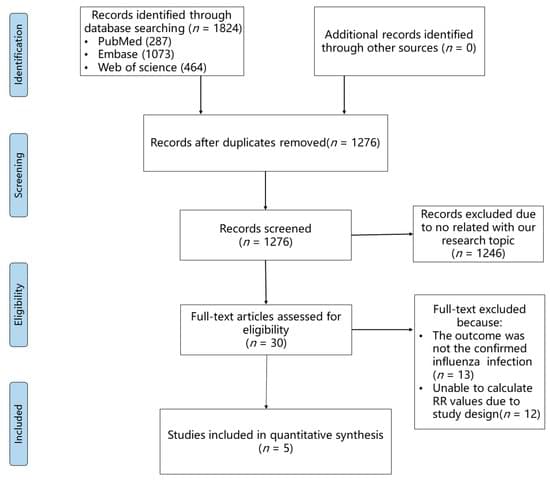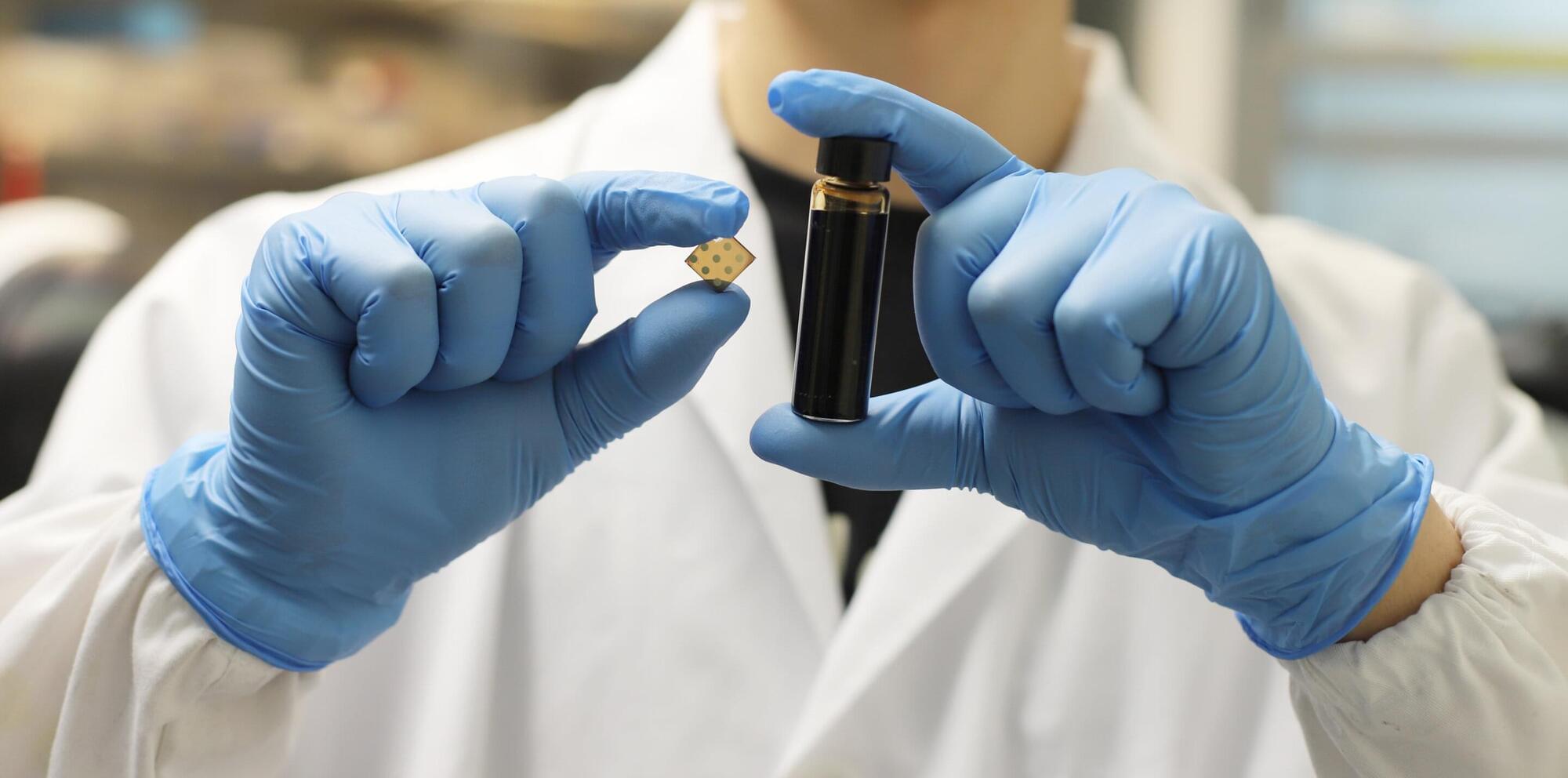Unmanned Aerial Vehicle (UAV) deployment has risen rapidly in recent years. They are now used in a wide range of applications, from critical safety-of-life scenarios like nuclear power plant surveillance to entertainment and hobby applications…



The Gs/Gd lineage of highly pathogenic H5 avian influenza viruses—including H5N1—has rapidly evolved, spreading globally and infecting a growing range of birds, mammals, and occasionally humans. This review highlights the expanding risks, the challenges of cross-species transmission, and urgent needs for surveillance, vaccination, and a unified One Health response.
Non contact weapon, invisible weapon, AI drone, microwave weapon, directed energy, sonic weapon, silent killer, future weapon, brain weapon, stealth tech, AI assassin, energy weapon, pulse weapon, death beam, ghost weapon, neural weapon, drone strike, mind control, lethal tech, smart weapon, AI war, kill tech, stealth drone, sound weapon, laser weapon, radiation gun, brain hack, AI killer, invisible attack, silent war, tech kill, energy beam, microwave attack, sonic attack, AI warfare, death tech, stealth kill, neural tech, drone war, mind weapon, pulse attack, ghost tech, AI death, silent strike, future kill, stealth attack, AI strike, energy kill, brain attack, tech assassin, invisible strike, AI hunter, silent beam, lethal drone, stealth beam, mind beam, death drone, AI sniper, ghost drone, pulse beam, neural beam, stealth sniper, AI pulse, silent sniper, energy sniper, brain sniper, tech sniper, invisible sniper, AI weapon, stealth weapon, mind sniper, pulse sniper, ghost sniper, AI beam, silent weapon, future sniper, stealth hunter, AI hunter drone, energy hunter, brain hunter, tech hunter, invisible hunter, AI assassin drone, silent hunter, lethal hunter, stealth assassin, mind assassin, pulse assassin, ghost assassin, AI killer drone, silent assassin, energy assassin, brain assassin, tech assassin, invisible assassin, AI death drone, stealth killer, mind killer, pulse killer, ghost killer, AI strike drone, silent killer, energy killer, brain killer, tech killer, invisible killer, AI war drone, stealth war, mind war, pulse war, ghost war, AI battle drone, silent war, energy war, brain war, tech war, invisible war, AI combat drone, stealth combat, mind combat, pulse combat, ghost combat, AI attack drone, silent combat, energy combat, brain combat, tech combat, invisible combat, AI defense drone, stealth defense, mind defense, pulse defense, ghost defense, AI security drone, silent defense, energy defense, brain defense, tech defense, invisible defense, AI surveillance drone, stealth surveillance, mind surveillance, pulse surveillance, ghost surveillance, AI recon drone, silent surveillance, energy surveillance, brain surveillance, tech surveillance, invisible surveillance, AI spy drone, stealth spy, mind spy, pulse spy, ghost spy, AI stealth drone, silent spy, energy spy, brain spy, tech spy, invisible spy, AI cloaked drone, stealth cloak, mind cloak, pulse cloak, ghost cloak, AI hidden drone, silent cloak, energy cloak, brain cloak, tech cloak, invisible cloak, AI secret drone, stealth secret, mind secret, pulse secret, ghost secret, AI covert drone, silent secret, energy secret, brain secret, tech secret, invisible secret, AI classified drone, stealth classified, mind classified, pulse classified, ghost classified, AI black ops drone, silent classified, energy classified, brain classified, tech classified, invisible classified, AI special ops drone, stealth ops, mind ops, pulse ops, ghost ops, AI tactical drone, silent ops, energy ops, brain ops, tech ops, invisible ops, AI strategic drone, stealth strategy, mind strategy, pulse strategy, ghost strategy, AI mission drone, silent strategy, energy strategy, brain strategy, tech strategy, invisible strategy, AI operation drone, stealth operation, mind operation, pulse operation, ghost operation, AI execution drone, silent operation, energy operation, brain operation, tech operation, invisible operation, AI termination drone, stealth termination, mind termination, pulse termination, ghost termination, AI elimination drone, silent termination, energy termination, brain termination, tech termination, invisible termination, AI neutralization drone, stealth neutralization, mind neutralization, pulse neutralization, ghost neutralization, AI suppression drone, silent neutralization, energy neutralization, brain neutralization, tech neutralization, invisible neutralization, AI control drone, stealth control, mind control, pulse control, energy control, brain control, tech control, invisible control, AI manipulation drone, AI persuasion drone, stealth persuasion, mind persuasion, pulse persuasion, ghost persuasion, AI coercion drone, silent persuasion, energy persuasion, brain persuasion, tech persuasion, invisible persuasion, AI intimidation drone, stealth intimidation, mind intimidation, pulse intimidation, ghost intimidation, AI threat drone, silent intimidation, energy intimidation, brain intimidation, tech intimidation, invisible intimidation, AI fear drone, stealth fear, mind fear, pulse fear, ghost fear, AI terror drone, silent fear, energy fear, brain fear, tech fear, invisible fear, AI panic drone, stealth panic, mind panic, pulse panic, ghost panic, AI anxiety drone, silent panic, energy panic, brain panic, tech panic, invisible panic, AI stress drone, stealth stress, mind stress, stealth scar, mind scar, pulse scar, ghost scar, AI mark drone, silent scar, energy scar, brain scar, tech scar, invisible scar, AI trace drone, stealth trace, mind trace.
AI surveillance, AI surveillance systems, AI surveillance technology, AI camera systems, artificial intelligence privacy, AI tracking systems, AI in public surveillance, smart city surveillance, facial recognition technology, real time surveillance ai, AI crime prediction, predictive policing, emotion detecting ai, AI facial recognition, privacy in AI era, AI and data collection, AI spying tech, surveillance capitalism, government surveillance 2025, AI monitoring tools, AI tracking devices, AI and facial data, facial emotion detection, emotion recognition ai, mass surveillance 2025, AI in smart cities, china AI surveillance, skynet china, AI scanning technology, AI crowd monitoring, AI face scanning, AI emotion scanning, AI powered cameras, smart surveillance system, AI and censorship, privacy and ai, digital surveillance, AI surveillance dangers, AI surveillance ethics, machine learning surveillance, AI powered face id, surveillance tech 2025, AI vs privacy, AI in law enforcement, AI surveillance news, smart city facial recognition, AI and security, AI privacy breach, AI threat to privacy, AI prediction tech, AI identity tracking, AI eyes everywhere, future of surveillance, AI and human rights, smart cities AI control, AI facial databases, AI surveillance control, AI emotion mapping, AI video analytics, AI data surveillance, AI scanning behavior, AI and behavior prediction, invisible surveillance, AI total control, AI police systems, AI surveillance usa, AI surveillance real time, AI security monitoring, AI surveillance 2030, AI tracking systems 2025, AI identity recognition, AI bias in surveillance, AI surveillance market growth, AI spying software, AI privacy threat, AI recognition software, AI profiling tech, AI behavior analysis, AI brain decoding, AI surveillance drones, AI privacy invasion, AI video recognition, facial recognition in cities, AI control future, AI mass monitoring, AI ethics surveillance, AI and global surveillance, AI social monitoring, surveillance without humans, AI data watch, AI neural surveillance, AI surveillance facts, AI surveillance predictions, AI smart cameras, AI surveillance networks, AI law enforcement tech, AI surveillance software 2025, AI global tracking, AI surveillance net, AI and biometric tracking, AI emotion AI detection, AI surveillance and control, real AI surveillance systems, AI surveillance internet, AI identity control, AI ethical concerns, AI powered surveillance 2025, future surveillance systems, AI surveillance in cities, AI surveillance threat, AI surveillance everywhere, AI powered recognition, AI spy systems, AI control cities, AI privacy vs safety, AI powered monitoring, AI machine surveillance, AI surveillance grid, AI digital prisons, AI digital tracking, AI surveillance videos, AI and civilian monitoring, smart surveillance future, AI and civil liberties, AI city wide tracking, AI human scanner, AI tracking with cameras, AI recognition through movement, AI awareness systems, AI cameras everywhere, AI predictive surveillance, AI spy future, AI surveillance documentary, AI urban tracking, AI public tracking, AI silent surveillance, AI surveillance myths, AI surveillance dark side, AI watching you, AI never sleeps, AI surveillance truth, AI surveillance 2025 explained, AI surveillance 2025, future of surveillance technology, smart city surveillance, emotion detecting ai, predictive AI systems, real time facial recognition, AI and privacy concerns, machine learning surveillance, AI in public safety, neural surveillance systems, AI eye tracking, surveillance without consent, AI human behavior tracking, artificial intelligence privacy threat, AI surveillance vs human rights, automated facial ID, AI security systems 2025, AI crime prediction, smart cameras ai, predictive policing technology, urban surveillance systems, AI surveillance ethics, biometric surveillance systems, AI monitoring humans, advanced AI recognition, AI watchlist systems, AI face tagging, AI emotion scanning, deep learning surveillance, AI digital footprint, surveillance capitalism, AI powered spying, next gen surveillance, AI total control, AI social monitoring, AI facial mapping, AI mind reading tech, surveillance future cities, hidden surveillance networks, AI personal data harvesting, AI truth detection, AI voice recognition monitoring, digital surveillance reality, AI spy software, AI surveillance grid, AI CCTV analysis, smart surveillance networks, AI identity tracking, AI security prediction, mass data collection ai, AI video analytics, AI security evolution, artificial intelligence surveillance tools, AI behavioral detection, AI controlled city, AI surveillance news, AI surveillance system explained, AI visual tracking, smart surveillance 2030, AI invasion of privacy, facial detection ai, AI sees you always, AI surveillance rising, future of AI spying, next level surveillance, AI technology surveillance systems, ethical issues in AI surveillance, AI surveillance future risks.

It’s spring, the birds are migrating and bird flu (H5N1) is rapidly evolving into the possibility of a human pandemic. Researchers from the University of Maryland School of Public Health have published a comprehensive review documenting research on bird flu in cats and calling for urgent surveillance of cats to help avoid human-to-human transmission.
The work is published in the journal Open Forum Infectious Diseases.
“The virus has evolved, and the way that it jumps between species—from birds to cats, and now between cows and cats, cats and humans—is very concerning. As summer approaches, we are anticipating cases on farms and in the wild to rise again,” says lead and senior author Dr. Kristen Coleman, assistant professor in UMD School of Public Health’s Department of Global, Environmental and Occupational Health and affiliate professor in UMD’s Department of Veterinary Medicine.
Autonomous battleships, autonomous defense technology, autonomous navy fleet, autonomous naval warships, autonomous patrol vessels, autonomous ship AI, autonomous warships 2025, battlefield AI systems, combat drone ships, cutting-edge naval AI, deep sea AI fleet, defense automation, drone fleet navy, drone operated ships, drone warships, future autonomous fleets, future navy AI, futuristic battle navy, ghost fleet AI, ghost fleet autonomous, ghost fleet drones, ghost naval ships, ghost warship fleet, high-tech naval fleet, military AI fleets, military autonomous ships, military drone ships, navy 2040 AI, navy AI automation, navy AI drone fleet, navy AI fleets, navy automation future, navy ghost drones, navy ghost ships, navy robotics systems, next-gen navy tech, robotic battle ships, robotic drone vessels, robotic navy future, robotic sea fleet, robotic sea patrol, robotic war navy, robotic warships AI, self-piloted navy, self-steering warships, stealth autonomous navy, stealth ghost fleet, stealth navy automation, tech navy evolution, unmanned AI navy, unmanned battle drones, unmanned combat vessels, unmanned ghost navy, unmanned military fleet, unmanned naval drones, unmanned navy boats, unmanned navy future, unmanned sea patrols, warship AI tech, warship drone AI, warship ghost fleet, warship robotics, warship self-navigation, autonomous ghost navy, AI powered navy, AI ship combat, AI ship navies, AI war vessels, AI warship combat, AI weaponized fleet, AI-controlled navy, AI-driven battle sea, AI-driven ghost fleet, AI-enabled navy future, autonomous ocean defense, autonomous war sea fleet, drone-based warships, drone-controlled navy, drone-led ghost fleet, drone-swarm navy, future military vessels, future sea combat, ghost navy technology, naval AI drones, navy AI future warfare, navy drone AI tech, navy drone patrol, navy ghost AI systems, robotic ship combat, sea battle AI systems, self-navigating warships, stealth AI navy tech, unmanned robotic ships, war automation navy, war ghost drones, war naval AI, war robot ships, weaponized drone navy, navy drone revolution, AI ocean patrols, underwater drone warfare, military ghost fleets, stealth unmanned warships, intelligent navy drones, navy robotics AI, robotic submarines AI, AI sea defense, future of naval AI, drone navy intelligence, unmanned stealth destroyers, AI-powered naval tech, smart navy ships, robotic destroyer fleet, next-gen ocean defense, deep sea robotics, drone guided torpedoes, sea AI weapons, unmanned marine fleet, combat sea robots, autonomous navy destroyers, unmanned military ocean tech, AI navy weapon systems, tech-driven warships, artificial intelligence warships, unmanned surface vessels, navy robotic patrol boats, AI-enabled destroyers, autonomous military defense, future ghost ships, navy drone control system, AI-controlled destroyers, unmanned combat surface fleet, ocean war robots, marine AI surveillance, robotic ocean patrols, future war drones, ghost ship navy, intelligent sea vessels, navy drone carriers, stealth autonomous ships, drone-enabled defense, underwater robotic navy, futuristic ocean fleet, drone-operated destroyers, AI-enabled sea robots, military robotics sea, next-gen destroyer drones, future stealth navy, navy robotics revolution, AI warfare at sea, unmanned maritime systems, AI naval monitoring, AI-controlled navy drones, autonomous destroyer squad, future naval swarms, robotic surface fleet, navy stealth AI, sea-based warbots, AI-controlled naval fleet, maritime ghost drones, automated navy systems, autonomous ship squadrons, ocean warfare automation, ghost destroyer drones, next-gen military fleets, automated sea defense, intelligent ship fleets, AI stealth destroyers, tech navy transformation, navy bots warfare, unmanned combat bots, autonomous naval innovations, AI warship patrols, automated ship navies, drone navy upgrades, future of robotic fleets, stealth robotics navy, AI ship fleets 2030, autonomous ocean warriors, naval robotics AI 2025, autonomous deep-sea ships, drone war technology, unmanned weaponized ships, futuristic ship fleets, next-gen ghost warships, ocean-based military AI, naval swarming drones, robotic future navy, navy drone revolution, AI ocean patrols, underwater drone warfare, military ghost fleets, stealth unmanned warships, intelligent navy drones, navy robotics AI, robotic submarines AI, AI sea defense, future of naval AI, drone navy intelligence, unmanned stealth destroyers, AI-powered naval tech, smart navy ships, robotic destroyer fleet, next-gen ocean defense, deep sea robotics, drone guided torpedoes, sea AI weapons, unmanned marine fleet, combat sea robots, autonomous navy destroyers, unmanned military ocean tech, AI navy weapon systems, tech-driven warships, artificial intelligence warships, unmanned surface vessels, navy robotic patrol boats, AI-enabled destroyers, autonomous military defense, future ghost ships, navy drone control system, AI-controlled destroyers.
Thailand debuts AI police robot at Songkran festival to enhance public safety with smart surveillance and facial recognition tech.
Today, we’re diving into how the 2004 reboot of Battlestar Galactica didn’t just serve up emotionally broken pilots and sexy robots—it predicted our entire streaming surveillance nightmare. From Cylons with download-ready consciousness to humans drowning in misinformation, BSG basically handed us a roadmap to 2025… and we thanked it with fan theories and Funko Pops.
🔎 Surveillance culture? Check.
👤 Digital identity crises? Double check.
🤯 Manufactured realities? Oh, we’re way past that.
Turns out, the Cylons didn’t need to invade Earth. We became them—scrolling, uploading, and streaming our humanity away one click at a time.
So join me as we break it all down and honor the sci-fi series that turned out to be way more documentary than dystopia.
👉 Hit like, share with your fellow glitchy humans, and check out egotasticfuntime.com before the algorithm decides fun is obsolete!
#BattlestarGalactica.

Previous studies reported that the association between statins use and influenza infection was contradictory. A systematic review and meta-analysis of longitudinal studies were performed to determine the association between statins use and influenza susceptibility. The literature search was conducted in PubMed, Embase, and Web of Science, from each database’s inception to 21 May 2023. The fixed effect model and random effects model were used for data synthesis. In our study, a total of 1,472,239 statins users and 1,486,881 statins non-users from five articles were included. The pooled risk ratio (RR) of all included participants was 1.05 (95% CI: 1.03–1.07), and there were still significant differences after adjusting for vaccination status. Of note, RR values in statins users were 1.06 (95% CI: 1.03–1.08) in people aged ≥60 years old and 1.05 (95% CI: 1.03–1.07) in participant groups with a higher proportion of females. Administration of statins might be associated with an increased risk of influenza infection, especially among females and elderly people. For those people using statins, we should pay more attention to surveillance of their health conditions and take measures to prevent influenza infection.

The frequency regime lying in the shortwave infrared (SWIR) has very unique properties that make it ideal for several applications, such as being less affected by atmospheric scattering as well as being “eye-safe.” These include Light Detection and Ranging (LIDAR), a method for determining ranges and distances using lasers, space localization and mapping, adverse weather imaging for surveillance and automotive safety, environmental monitoring, and many others.
However, SWIR light is currently confined to niche areas, like scientific instrumentation and military use, mainly because SWIR photodetectors rely on expensive and difficult-to-manufacture materials. In the past few years, colloidal quantum dots —solution-processed semiconducting nanocrystals—have emerged as an alternative for mainstream consumer electronics.
While toxic heavy-metals (like lead or mercury) have typically been used, quantum dots can also be made with environmentally friendly materials such as silver telluride (Ag2Te). In fact, silver telluride colloidal quantum dots show device performance comparable to their toxic counterparts. But they are still in their infancy, and several challenges must be addressed before they can be used in practical applications.